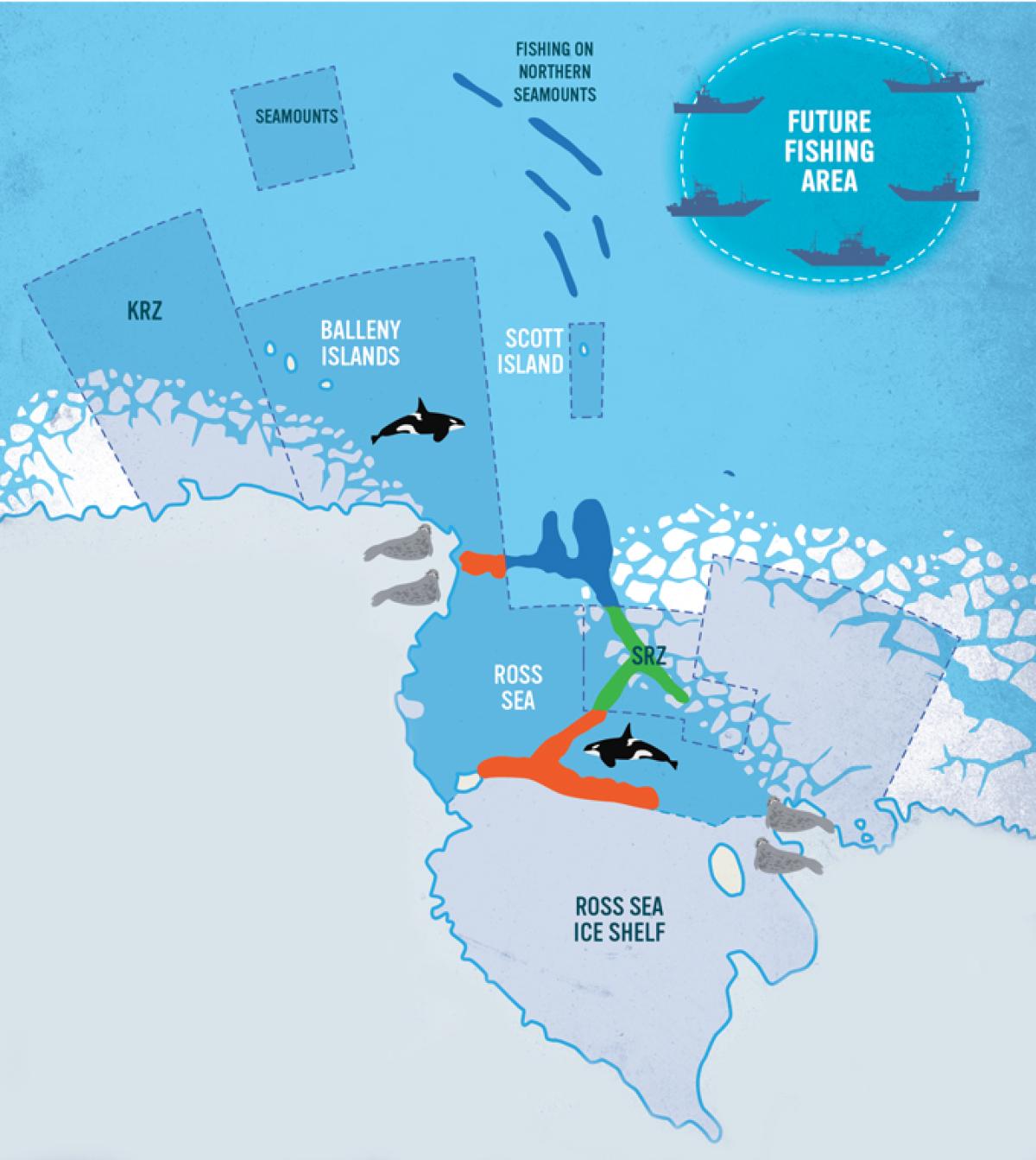Keep Out of the Ross Sea
In October 2016, the Commission for the Conservation of Antarctic Marine Living Resources (CCAMLR) created a new marine protected area (MPA) in the Ross Sea in the Southern Ocean. When activated at the end of the year, this MPA will be the largest in the world.
The Commission was created in 1982 and is part of the Antarctic Treaty system. As such, its actions are binding on the treaty signatories. Membership includes delegates from 24 nations plus the European Union who meet annually in Hobart, Australia.
In 2009, the Commission created the first protected area in the Antarctic’s South Orkney Islands. Covering an area of 36,000 square miles, it was also the first protected area established in international waters. All others are in territorial waters or exclusive economic zones (EEZ) of coastal states where those governments regulate their MPAs.
The new Ross Sea MPA is in the West Antarctic adjacent to the massive Ross Ice Shelf. It covers 598,460 square miles of ocean. Commission delegates (primarily from New Zealand and the United States) proposed this protected area in 2011. Its adoption had been blocked by China and Russia. The Russian representative currently chairs CCAMLR. Primarily their objections had been related to fisheries access. In 2015 China dropped its objections, and Russia followed in 2016. About 72 percent of the Ross Sea MPA will be a “no-take” zone. This means no extractive activities can take place there. The next largest area permits some extraction but only in support of scientific research. A very small area will continue to permit existing commercial fishing. Unlike most, this MPA is subject to an assessment and termination in 35 years unless renewed by CCAMLR.
The Commission is now considering two other MPAs in the Antarctic. If authorized, they will be in the East Antarctic, far south of South Africa, and in the Weddell Sea, adjacent to the Antarctic Peninsula. These proposals may have an easier time now that the Ross Sea MPA has been approved.
These Antarctic MPAs represent only a small portion of a global effort to protect portions of the world ocean. By limiting or prohibiting extractive activities, biological reserves can be created where species can regenerate and repopulate. By doing this on a global scale it may be possible to significantly reduce the massive loss of marine species that has been occurring the last few decades.
The influential International Union for Conservation of Nature (IUCN) has defined marine protected areas as: “A clearly defined geographical space, recognized, dedicated and managed, through legal or other effective means, to achieve the long term conservation of nature with associated ecosystem services and cultural values.”
By this definition an MPA can permit everything from limited use of its resources to a complete prohibition on any extractive activity. There is no “one size fits all” in MPA design and operation. The governing authorities (nations) that manage them determine the scope of activities.
A significant challenge with high seas protected areas is policing them. It is unlikely that specific law enforcement organizations will be assigned to protect them. Illegal fishing is a serious problem throughout the world today, and it will be difficult to combat in remote protected areas.
One benefit of MPAs is that fish stocks increase in the areas immediately adjacent. As fish within the protected area thrive and multiply, their overpopulation creates a migration out of the protected areas.
At present, the United States leads the world with more than 29 percent of its waters covered by MPAs. Australia is in close second place with 28 percent of its marine area under protection. The United States significantly increased the amount of ocean area under protection when, in August 2016, the Obama Administration expanded the Papahanaumokuakea Marine National Monument in Hawaii from 139,000 to nearly 580,000 square miles. This was the largest MPA in the world until the creation of the Ross Sea protected area. Only about 3 percent of the Hawaiian MPA is a no-take zone.
In 2006 the United Nations proposed that at least 10 percent of the world ocean area be set aside in protected areas by the year 2020. This goal likely will not be met. By 2016 only 2.1 percent of the world ocean area has been given MPA status, and less than half of that has received the most restrictive status of a no-take area. As global warming and pollution continues to affect life in the sea, the protection of a relatively small part of the world ocean area can provide significant benefits for all humankind.



